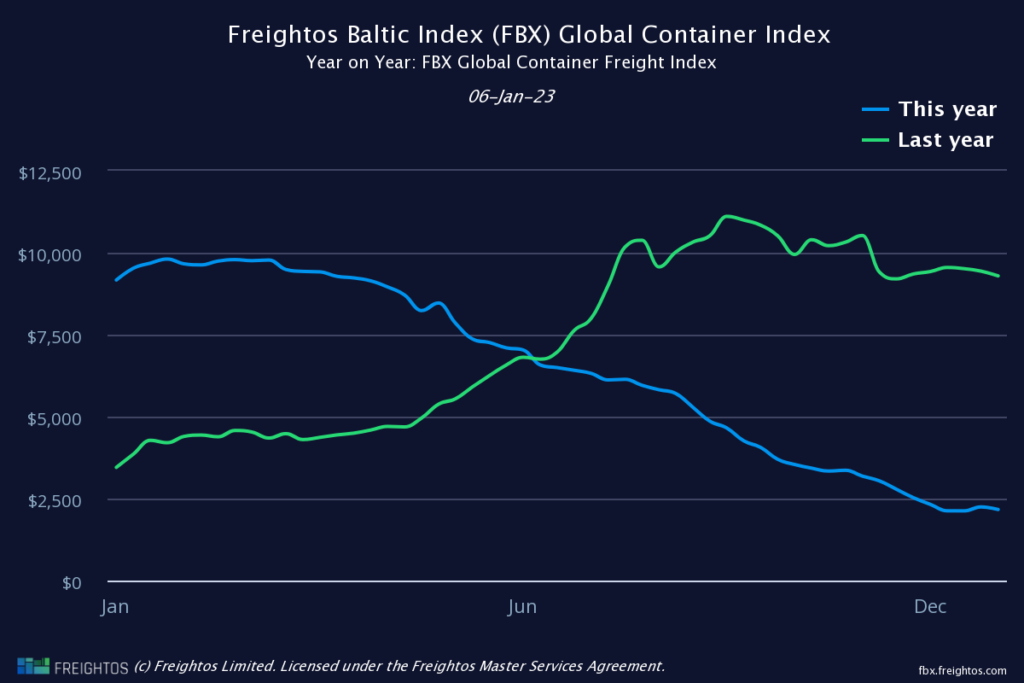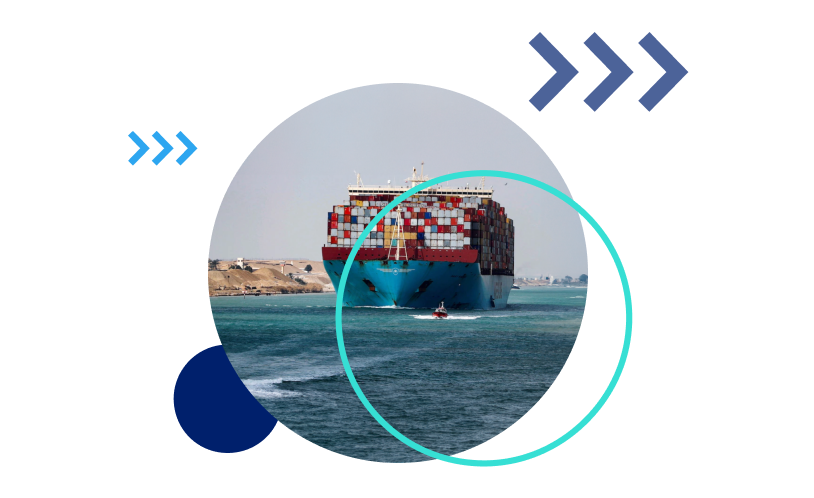For those of us that have been in freight shipping for more than a year, the current conditions are a bit bewildering. If you’re also wondering what in the world is going on and how to manage your shipping supply chain then keep reading for a quick rundown of the situation and some super actionable tips from our Customer Success Team Leader.
The Freight Crisis – A Super Quick Overview
Freight has always been a huge but quiet and opaque industry, moving goods from where they’re made to where they are sold, mainly by ocean.
But this has all changed with the pandemic.
At the outset, trade dropped off with China shuttering factories and sheltering in place. In response, carriers hedged their losses with capacity management, seriously limiting available space.
Then mid-summer when China’s factories began reopening, homebound consumers around the world shifted to purchasing online, propelling e-commerce growth by a decade in just a few months.
With many small to medium businesses going digital to keep sales up, more small, online businesses founded, and consumer demand bouncing back to similar numbers as previous years, freight also started to pick up again.
And this is when things got weird.
As demand kept shooting up and capacity stayed limited, importers started noticing that the price of shipping was climbing (quickly). Normally freight rates go up a couple of times a year, depending on market conditions. These price hikes, or GRIs, don’t even always get implemented by carriers. Enter pandemic.
Record breaking GRI streaks, unbelievably tight capacity, ongoing consumer demand, and port delays all caused major supply chain difficulties. By 2023, rates have come down but we’re still not sure what the new normal is.

Looking for live quotes from vetted providers?
Freight insights from SMB importers
In a recent survey, we asked our users about their experiences shipping internationally over the past year and whether their supply chain was affected.
- 94% responded that their business was impacted by the pandemic
- 53% indicated that delays affected them
- 49% pointed to high freight shipping costs as a major pain point
It’s a tough and complex situation, with SMBs feeling the pressure more than larger businesses.
As a marketplace, Freightos.com has made a mission of making international freight more transparent and accessible to smaller shippers. So we’ve been following what’s going on pretty closely, along with the freight forwarders and importers using our platform.
We’ve been getting a full container load of questions about how to handle volatility and high prices, so we thought it would be worth finding clear answers to common questions.
We asked our Customer Success Team Leader, Aya, for the most up-to-date and actionable tips to help you grow your business and reduce frustration.
How to ship packages as a small business
1. Talk to your supplier
Okay, so let’s start from the beginning.
You want to purchase something, let’s say from China, and ship it to North America. What do you do first?
Go to the source.
When sourcing goods from overseas, it’s important to make sure that your supplier gives you all the necessary information you need to move your goods. Small to medium businesses are particularly vulnerable to fluctuating shipping costs, so before purchasing a product get an idea of what the total landed cost of your goods will be.
Here are a few things to ask:
- Are you experienced in shipping this commodity?
- What documents are needed to ship and can you provide them?
- How many units can you produce and how long will production take?
- What are the expected dimensions of the shipment?
- Are there additional wait times or costs I need to know about?
- Do you deliver to the port of origin and what is the date of delivery?
It’s also a good idea to find a reputable partner to conduct quality assurance and product inspections, either onsite or virtually, during the manufacturing process to help you secure your production and safeguard the quality of your product.
2. Find a freight forwarder
Once you have ordered your goods, find a freight forwarder that will make sure your goods keep moving smoothly once they’ve left the factory or port of origin. Keeping your freight forwarder and supplier communicating and aligned is vital to keep things from falling through the cracks – at your expense.
Here are a few things to look for when choosing a freight forwarder:
- Of course, cost is a major factor. Comparing several quotes can help you find the most economical solution for your shipping needs.
- Freight forwarders are licensed and must be compliant with local laws, so check on their credentials before committing.
- It’s also important that your forwarder has experience in the country of origin and is accustomed to working with suppliers and local authorities. You can also ask if they have agents working in the country of origin to help manage the shipping process.
- Another way to know if a freight forwarder is reliable is to check reviews. This is one of the benefits of booking on a marketplace like Freightos.com — real reviews from other shippers just like you means you can book with confidence.
3. Get your documents in order
Once you’ve confirmed all the necessary details of the shipment with your supplier, it’s time to start crossing t’s and dotting i’s.
You’ll need some documents that are common for all international shipments and make sure that all the details included in them are correct. Mistakes can lead to delays and adjustment costs, and that can in turn impact your bottom line.
A few of the documents that you’ll need are:
- Commercial Invoice
This document includes all of the details about your shipment, like a description of the commodity, the total value of the shipment, and the code required for customs clearance. The name of the supplier and the purchaser are also included on the commercial invoice.
- Packing List
This document describes the volume, weight, and number of boxes in your shipment. It should be provided by your supplier.
- Power of Attorney
Some forwarders include customs clearance as a service, but barring this it’s a good idea to retain a customs broker to handle this part of the process. To authorize customs brokers to handle clearance if you’re shipping to the US, you’ll need to sign a Power of Attorney form (POA). This is provided by your broker.
- Telex Release
One of the documents we hear about frequently is the Telex release. You need to get this from your supplier and pass it along to your freight forwarder, otherwise you may get hit with an added charge.
If you want to know more about the documents you’ll need to ship, you find a comprehensive list here.
4. Expect some added fees
Keep in mind that besides the main freight rate and customs, there are some additional costs involved in shipping. Some are standard, for example lane surcharges or documentation fees, but congestion and delays can also lead to valid added fees that your freight forwarder cannot control.
For example, if your shipment doesn’t make it to port before the stipulated gate-in date, you may have to pay a GRI rate adjustment.
You can also expect to pay insurance on your shipment. While this does add to the cost of importing, losing your cargo without coverage is far more costly.
It is also worth retaining a customs broker instead of trying to go it alone. International customs clearance is complex and mistakes can be very costly.
The amount of charges, fees, and penalties (oh my!) associated with freight shipping can be overwhelming, but knowing what these are and what to expect before you book will empower you to make the best decisions for your business.
How do I set up shipping for my business?
At Freightos.com, we get that international freight shipping can be confusing. We speak to both importers and freight forwarders all day, every day, so while we also get overwhelmed by the complexity of freight, we know it’s not just us.
Many of the SMB importers on our platform ask the same questions, so we figured we’d try to answer some of the most common ones and save you some time and hassle.



